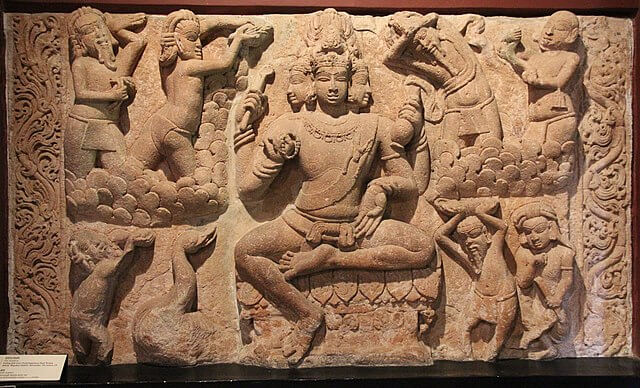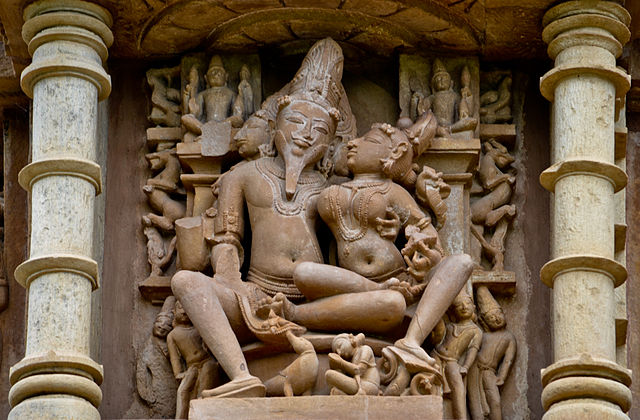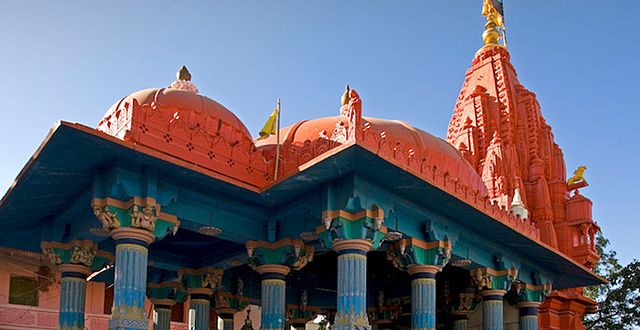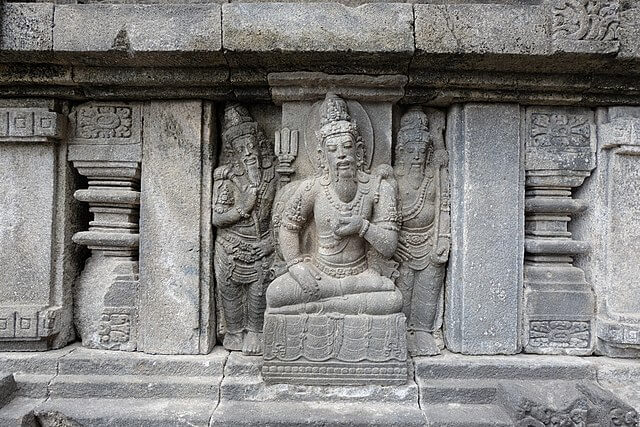Lord Brahma is the Hindu god of Creation and one of the three supreme deities of the Hindu religion. Together with Vishnu, who is the preserver god, and Shiva, the god of destruction, they form the “Trimurti”, the Hindu trinity of supreme divinity.
Featured Image: TusharSharma2510, Brahma-2, CC BY-SA 4.0
You may also like:
Brahma: The Fall of the Universe’s Powerful Creator
Vishnu: The Powerful Protector of the World
Lord Shiva: The Powerful Destroyer of the World
Table of Contents
- Who is Lord Brahma?
- The Birth of Lord Brahma
- The Symbolism of Lord Brahma
- Hamsa: Lord Brahma’s Vehicle
- Saraswati: Lord Brahma’s Consort
- Lord Brahma Creates Shatarupa
- Kalpa: A Day of Lord Brahma
- Lord Brahma Avatars
- Festivals and Celebrations associated with Lord Brahma
- Lord Brahma Temples
- Decline of Lord Brahma’s worship
Who is Lord Brahma?
According to Hindu mythology, Brahma created the world and all living beings. Brahma is also the source of the Vedas, and is responsible for the preservation of dharma (righteousness). However, it is important not to confuse Brahma with Brahman, which is a term given to describe the Supreme Being, the omnipresent Ultimate Reality.
In some Hindu traditions Brahma is identified with Prajapati, a Vedic deity of Hinduism, and the two are seen as interchangeable. In other traditions, Prajapati is a separate deity who is seen as the creator of the world, while Brahma is the creator of all the living beings that inhabit it.
The Birth of Lord Brahma
The Cosmic Golden Egg
According to Hindu mythology, in the beginning of time, there was only darkness and chaos, and out of it, Hiranyagarbha, the golden egg, was formed, which contained the seeds of the universe. Then Brahma, emerged from the egg and saw that there was nothing around him but darkness, so he started the process of creation.
Brahma first created the heavens and the earth, the sun and the moon, and the stars in the sky. He then created the oceans, mountains, and forests, and filled them with all kinds of plants and animals. However, he realized that the universe was incomplete without intelligent beings to inhabit it, so he created human beings and gave them the power of speech, intelligence, and consciousness.
To assist him in the creation of the Universe, Brahma gave birth to 11 “Prajapatis” or forefathers of the human race, and 7 great sages or “Saptarishis”. These offsprings of Brahma who where born out of his mind are called “Manasputras”.
Lord Brahma’s Birth Out of Vishnu’s Navel
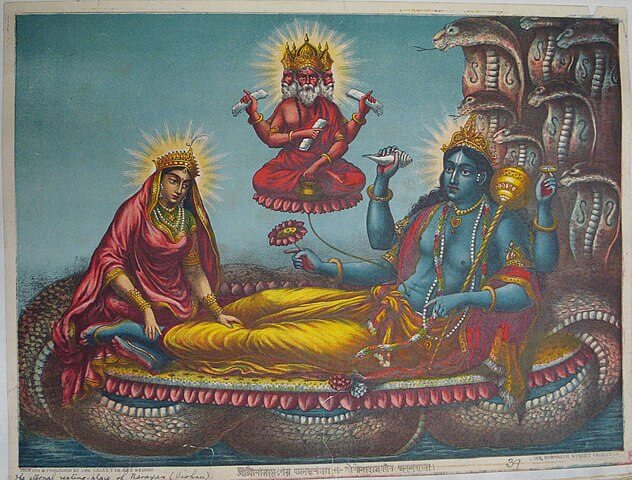
According to another well-known legend, Brahma emerged from a lotus that sprung from the navel of Vishnu. In the beginning there was only darkness and chaos. Then, Lord Vishnu, the preserver of the universe, appeared and began to float on a serpent in the cosmic ocean. He noticed that the universe needed a creator to bring order to the chaos, and so he began to meditate. As he meditated, a lotus flower emerged from his navel, and from the lotus Brahma was born. For this Brahma is also known as “Nabhija” meaning “born from the navel”.
Other Accounts on Lord Brahma’s Birth
Brahma’s mythology is complex and somewhat contradictory. According to some Puranas, Brahma was created by Ardhanarishvara, a composite form of Shiva and his consort Parvati. Alternatively, other Puranas describe Brahma to have been created by the goddess Devi.
Additionally, some Hindu texts mention that after Brahman had created the water, he placed his seed in. This transformed into a golden egg from which Brahma later emerged. In other texts, Brahma appears to be born from the union of Brahman and the female energy Maya.
Overall, despite being one of the supreme gods of Hinduism, Brahma is described as a “secondary creator” according to Hindu texts. So, although, Brahma may be considered the creator of all beings in the universe, he is not the creator of the primordial universe itself.
The Symbolism of Lord Brahma
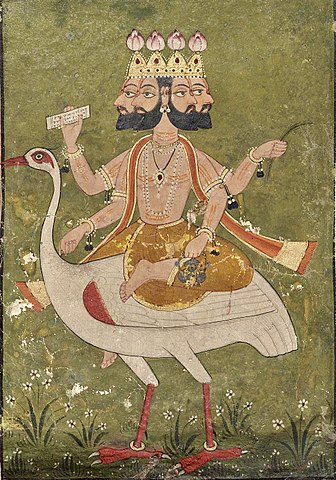
Brahma, is usually depicted as a bearded man with four faces, four arms, and wearing a crown, which symbolizes his status as the creator. Most of the time he is either shown riding Hamsa, the divine swan, or seated on a lotus flower, which symbolizes purity and detachment.
Lord Brahma’s Four Heads
The four heads of Brahma symbolize the four cardinal directions and also his knowledge of the four Vedas, the ancient Hindu religious scriptures. Each head is said to recite one of the four Vedas: Rig Veda, Yajur Veda, Sama Veda and Atharva Veda.
Lord Brahma’s Four Arms
Brahma is depicted with four arms and in each of his hands he is holding a different object that represents a certain power and ability: the mala beads (rosary), symbolize time; the water-pot (kamandalu), symbolizes the potential for creation; the sacred texts of the Vedas, symbolize sacred knowledge and wisdom; the ladle, a symbol of sacrificial ceremonies (yajna), and a sceptre (danda), a weapon capable of protecting him from attacks.
The Brahmastra
According to Hindu mythology, Brahma is also the creator of the “Brahmastra”, a powerful weapon capable of destroying the whole universe and all creation.
Hamsa: Lord Brahma’s Vehicle
The Hamsa is a mythical bird and the vehicle or mount of Lord Brahma. The word “hamsa” means swan or goose, and this bird is often depicted as a pure white bird with a long neck and beak. In Hindu mythology, the hamsa is said to possess several mystical powers, including the ability to separate milk from water, symbolizing its ability to distinguish between good and evil, and real and illusory.
In Hindu art, Brahma is often depicted riding the hamsa who is carrying him through the universe as he performs his duties of creation. The hamsa is also a symbol of spiritual purity, transcendence and enlightenment in Hinduism.
Saraswati: Lord Brahma’s Consort
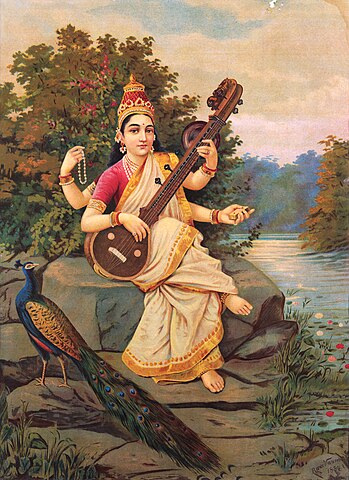
Brahma’s consort, Saraswati, is the goddess of knowledge, music, and the arts. She is depicted as a beautiful, four-armed, woman holding various objects in her hands. Her four arms symbolize the four aspects of human personality: mind, intellect, ego, and consciousness. In her hands, she holds a book, which represents knowledge; a string of prayer beads, which represents spiritual discipline; a veena (stringed musical instrument), which represents music; and a lotus flower, which represents purity and enlightenment.
Lord Brahma Creates Shatarupa
According to the Brahma Purana, Shatarupa is the first woman created by Brahma. She married Manu, the first man and their descendants are referred to as “manushya”, which is the Sanskrit word for mankind.
According to the myth, after creating the universe and all the living beings, Brahma created Shatarupa as his daughter and consort, however, he was immediately captivated by her beauty and fell in love with her. Whenever Shatarupa tried to move away from him, Brahma would sprout a head facing each direction so that he could always see her. In a desperate attempt to evade his gaze, Shatarupa jumped over Brahma’s heads. However, Brahma sprouted a fifth head above the others to continue staring at her. It was at this moment that Shiva appeared and, consumed with anger for his behavior, cut off Brahma’s top head.
Kalpa: A Day of Lord Brahma
In Hindu mythology and cosmogony, it is believed that one day of Brahma’s life is equivalent to 4.32 billion solar years. Each such day is called a “kalpa” and is the period of time for one cycle of creation and destruction of the universe. The cycle of creation and destruction is believed to repeat for a total of 100 Brahma years or 311.04 trillion solar years. This period is called “maha kalpa”. At the end of the 100 Brahma years, Lord Brahma is believed to merge into the Ultimate Reality or Brahman.
According to Hindu mythology, during this entire period of the “maha kalpa”, Lord Vishnu, who is the preserver of the universe, takes one breath. When Vishnu inhales, the universe goes in a state of dissolution, known as “Pralaya”. Accordingly, when he exhales, Brahma is born anew and starts the process of creation once again.
Lord Brahma Avatars
According to the Dasam Grant scriptures of Sikhism there are 7 great avatars of Brahma, but there is also mention of another 4 avatars in other Hindu texts:
Valmiki Avatar: The sage and poet Valmiki who wrote the great Indian epic Ramayana.
Kashyapa Avatar: The revered sage and one of the seven Saptarishis.
Dattatreya Avatar: the master of Yoga. A combined avatar of the Hindu trinity depicted with 3 heads and 6 hands.
Vyasa Avatar: The author of Mahabharata.
Kalidasa Avatar: A Sanskrit author, considered India’s greatest poet and playwright.
Chandra Avatar: Also known as Soma, the Hindu god of the moon.
Vikahanas Avatar: An avatar of Brahma who was taught the mystery of worship by Lord Vishnu.
Shukra Avatar: One of the sons of the sage Brighu. Shukra divided himself into two, one half becoming the guru of the Devas (gods) and the other half being the guru of the Asuras (demons).
Baches Avatar: One of the seven Saptarishis.
Khat Avatar: One of the seven Saptarishis.
Yajnavalkya Avatar: An incarnation of Brahma in response to a curse by Lord Shiva.
Festivals and Celebrations associated with Lord Brahma
In Hinduism, god Brahma is not generally worshipped as actively as some of the other deities such as Vishnu and Shiva. However, there are a few festivals and celebrations associated with Brahma, as well as some that celebrate his consort Saraswati, who is closely associated with knowledge and learning, which are attributes also linked to Brahma.
Ugadi
Ugadi is the Hindu new year’s day, celebrated in the south Indian states of Andhra Pradesh, Karnataka, Telangana and Goa. It is observed on the first day of the month of Chaitra (late March to early April) and it is dedicated to Lord Brahma. According to belief, on this day Brahma started creating the earth.
Brahmotsavam
Brahmotsavam is a major festival that is celebrated in the temple town of Tirupati in Andhra Pradesh, India. The festival is dedicated to Lord Venkateswara, a form of Lord Vishnu, who is believed to have been created by Brahma.
Brahma Temple Festival
The Brahma Temple in Pushkar, Rajasthan, India, is one of the few temples dedicated to Brahma. The temple hosts an annual festival in October or November that is dedicated to Brahma.
Brahma Jayanti
This is a minor Hindu festival that celebrates the birth of Brahma. It is typically observed on the full moon day (Purnima) in the Hindu month of Vaishakha (April-May).
Pitru Paksha
The Pitru Paksha is a 16-day period in the Hindu lunar calendar when Hindus pay homage to their ancestors. On its 12th day the ritual of Brahma Tarpanam is performed to honor Brahma and other deities associated with creation.
Lord Brahma Temples
Although Brahma is considered one of the supreme gods, there are only a few temples dedicated to him. However, he is often revered and worshipped in temples dedicated to the Hindu Trinity, the Trimurti. The most famous Brahma temple is located in Pushkar, Rajasthan, and it is an important pilgrimage site. The most notable Brahma temples, include:
Asotra Temple, Rajasthan
The Asotra Temple is the second largest Brahma temple and is located in Barmer, Rajasthan.
Ekmukhi Datta Temple, Maharashtra
This temple is located in Maharashtra and is dedicated to Lord Dattatreya, the combined form of Brahma, Vishnu and Shiva.
Kumbakonam Temple, Tamil Nadu
This temple is located in Tamil Nadu, India, and is dedicated to Adi Kumbeswarar, a form of Lord Shiva who is said to have appeared in the form of Brahma.
Prambanan Temple, Indonesia
Prambanan is a Hindu temple complex located in Central Java, Indonesia. It is dedicated to the Trimurti of Brahma, Vishnu, and Shiva. While the temple is not specifically dedicated to Brahma, he is still worshiped as part of the Trimurti.
Angkor Wat, Cambodia
A shrine dedicated to Lord Brahma can also be found in the temple complex of Angkor Wat, in Cambodia.
Decline of Lord Brahma’s worship
Although Brahma is one of the supreme deities in Hinduism, his worship has declined over the years. There are several reasons why this might have happened, including his limited role in mythology, replacement by other deities, lack of temples, and complex mythology.
- Ardhanarishvara: The Powerful Synthesis of the Two Opposites in One

- Hanuman: The Most Valuable Life Lessons from the Monkey God

- King Kakudmi: One of the Most Amazing Hindu Myths

- Kakbhushundi: One of the Most Fascinating Tales from Hindu Mythology

- Ashtavakra Gita: One of the Greatest Masterpieces of Hindu Philosophy

- Mudgala Purana: Unveiling the Most Popular Ganesha Avatars



